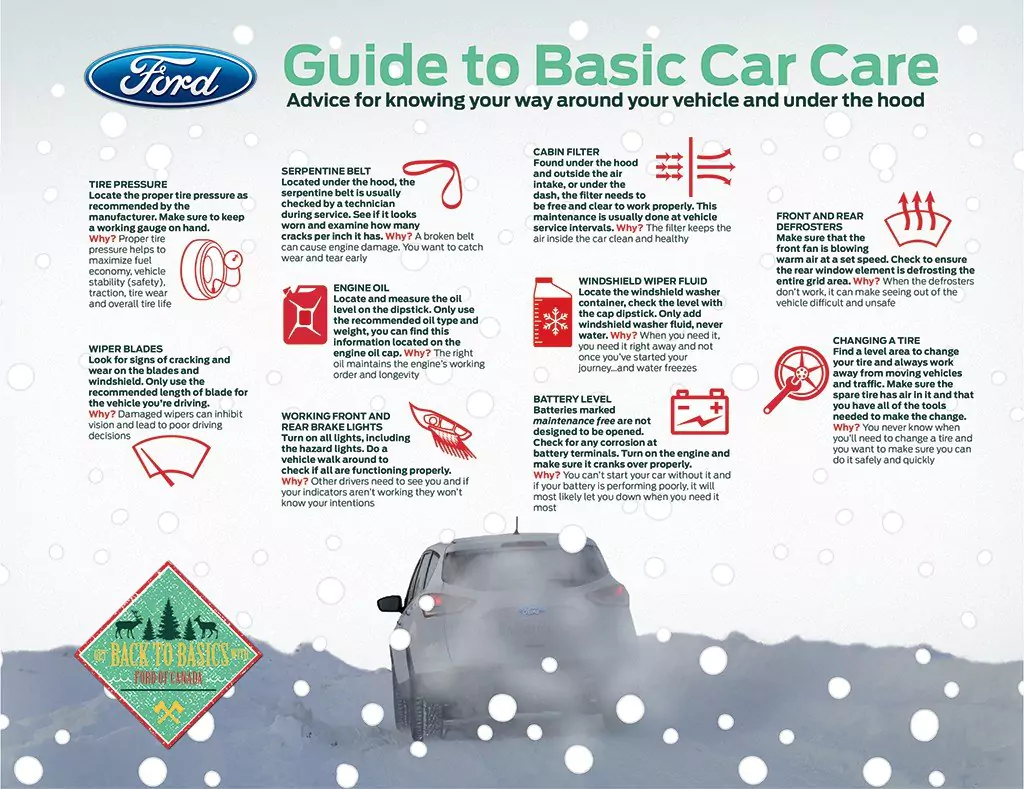

Warning Signs Your Used Car Needs Repairs
While a well-maintained used car can provide years of reliable motoring on Australian roads, it’s essential to remain vigilant and aware of potential issues that may arise. Recognising early warning signs is crucial for every used car owner in Australia. Addressing these signals promptly can prevent minor problems from escalating into major, and often expensive, breakdowns, ensuring your safety and the longevity of your vehicle.
This guide outlines common warning signs that indicate your used car likely needs professional attention from an Aussie mechanic. For those considering upgrading or finding their first pre-loved vehicle, exploring the market for second hand cars for sale can offer a range of reliable options to suit various needs and budgets.
Listen Up! Unusual Noises Are Telling You Something:
- Knocking or Banging from the Engine: This could signal serious internal engine issues like worn bearings, piston slap, or low oil pressure. These problems can be exacerbated by our hot climate and long driving distances, potentially leading to significant engine damage if ignored. It’s crucial to get this checked by a qualified mechanic immediately.
- Squealing Brakes: Often a tell-tale sign of worn brake pads needing replacement, a critical safety issue for navigating our roads, from busy city streets to winding country passes. However, it could also indicate glazed pads, worn rotors, or issues with the callipers, all requiring inspection.
- Grinding Noises: This could stem from several areas:
- Brakes: Metal-on-metal grinding indicates severely worn brake pads and likely damage to the rotors, requiring urgent replacement.
- Wheel Bearings: A rumbling or grinding noise that changes with speed could point to worn wheel bearings, which can be a safety hazard if they fail.
- Drivetrain: Grinding during gear changes in a manual or unusual noises from an automatic transmission need professional diagnosis.
- Hissing Sounds: This often indicates a leak:
- Coolant: A sweet or slightly pungent smell accompanying a hissing sound under the bonnet could be a coolant leak, risking engine overheating, especially in our summers.
- Oil: A burning smell with a hissing sound might indicate an oil leak onto a hot engine component.
- Power Steering Fluid: A whine accompanied by a hiss could be a power steering fluid leak.
- Exhaust: A hissing from the exhaust system might indicate a leak, potentially reducing efficiency and releasing harmful gases.
- Clicking While Turning: This is a classic sign of worn Constant Velocity (CV) joints, particularly in front-wheel-drive vehicles common in urban driving. If left unaddressed, the CV joint can fail completely, leading to a loss of power to the wheels.
- Whining Noises: The source of a whine can vary:
- Transmission: A persistent whine could indicate low fluid or internal damage in the transmission.
- Power Steering Pump: A whine that increases when turning the steering wheel might point to a low fluid level or a failing pump.
- Differential: A whine from the rear of the car could indicate issues with the differential.

Watch Out! Visual Clues Demanding Attention:
- Dashboard Warning Lights: These are your car’s way of communicating problems. Never ignore them!
- Check Engine Light: Can indicate a wide range of issues, from a loose fuel cap to serious engine or emissions problems. Requires scanning the car’s computer for fault codes.
- Oil Pressure Light: A red warning indicating critically low oil pressure. Stop the car immediately as continuing to drive can cause severe engine damage.
- Battery Light: Suggests a problem with the charging system (alternator, battery, or related wiring).
- ABS Light: Indicates a malfunction in the Anti-lock Braking System, a crucial safety feature.
- Coolant Temperature Light (Red): Signals engine overheating. Stop the car and allow it to cool down before checking coolant levels.
- Tyre Pressure Warning Light: Indicates low tyre pressure in one or more tyres, affecting safety and fuel efficiency.
- Excessive Exhaust Smoke: The colour and amount of exhaust smoke are key indicators:
- Blue Smoke: Burning engine oil, often due to worn piston rings, valve seals, or turbocharger seals.
- White Smoke: Could indicate burning coolant (often a sign of a head gasket leak), especially if accompanied by a sweet smell. It can also be normal on cold mornings but should dissipate as the engine warms up.
- Black Smoke: Indicates the engine is burning too much fuel, potentially due to faulty fuel injectors, a dirty air filter, or a malfunctioning sensor.
- Fluid Leaks: Puddles under your car require immediate investigation:
- Oil: Typically dark brown or black. Check your engine oil level.
- Coolant: Can be various colours (green, yellow, pink, blue). Check your coolant level.
- Transmission Fluid: Usually reddish-brown. Check your transmission fluid level (if accessible).
- Brake Fluid: Clear to light yellow. A low level can indicate a serious brake system leak.
- Power Steering Fluid: Amber or reddish. Often accompanied by a whining noise.
- Bulging or Damaged Tyres: Inspect your tyres regularly for:
- Uneven Wear: Can indicate issues with wheel alignment, tyre pressure, or suspension components.
- Cuts or Sidewall Damage: Can weaken the tyre and lead to a blowout, especially dangerous at highway speeds.
- Bulges: A sign of internal tyre damage that can result in a sudden blowout. Replace the tyre immediately.
- Low Tread Depth: Reduces grip, particularly on wet roads, increasing the risk of skidding. Our regulations have minimum tread depth requirements for roadworthiness.
Feel the Difference! Changes in Performance and Handling:
- Rough Idling or Stalling: This could point to a multitude of issues affecting the engine’s ability to run smoothly when stationary.
- Fuel System: Dirty or failing fuel injectors, a weak fuel pump not delivering enough pressure, a clogged fuel filter restricting flow, or even low fuel levels can cause this.
- Ignition System: Worn or fouled spark plugs, failing ignition coils not providing a strong enough spark, or a faulty distributor (in older vehicles) can lead to misfires and rough idling.
- Air Intake: A dirty air filter restricting airflow, a faulty mass airflow sensor misreading the amount of air entering the engine, or vacuum leaks disrupting the air-fuel mixture can also be culprits.
- Engine Control Unit (ECU): In some cases, a malfunctioning ECU might be sending incorrect signals to various engine components.
- Loss of Power or Poor Acceleration: This suggests the engine isn’t producing its full potential.
- Engine Issues: Low engine compression (due to worn piston rings or valves), a blocked exhaust system (e.g., a clogged catalytic converter restricting airflow), or internal engine damage can cause a noticeable power loss.
- Fuel System: Similar to rough idling, insufficient fuel delivery due to a weak pump or clogged filter can limit power output.
- Air Intake: A severely clogged air filter can starve the engine of oxygen, reducing power.
- Sensors: Faulty sensors like the mass airflow sensor or oxygen sensors can provide incorrect data to the ECU, leading to suboptimal engine performance.
- Hesitation or Jerking During Acceleration: This indicates an inconsistent delivery of power.
- Fuel Delivery: Intermittent issues with fuel injectors or the fuel pump can cause hesitation.
- Ignition System: Sporadic misfires due to faulty spark plugs or coils can lead to a jerking sensation.
- Transmission: Slipping gears or internal problems within an automatic transmission can manifest as jerking during acceleration.
- Engine Management: Issues with the ECU or its sensors can cause the engine to momentarily lose or gain power unexpectedly.
- Vibrations: Unusual shaking can originate from various components.
- Tyres and Wheels: Unbalanced tyres, damaged rims, or uneven tyre wear can cause vibrations, especially at higher speeds.
- Wheel Alignment and Suspension: Misaligned wheels, worn shocks or struts, damaged suspension bushings, or loose steering components can lead to vibrations felt in the steering wheel or chassis.
- Drivetrain: Worn CV joints (especially noticeable during turning), a damaged driveshaft, or issues with the differential can cause vibrations.
- Engine and Transmission Mounts: Worn or broken engine or transmission mounts can allow excessive movement, resulting in vibrations felt throughout the car.
- Pulling to One Side While Driving or Braking: This indicates an imbalance in the forces acting on the vehicle.
- Tyre Pressure: Unevenly inflated tyres can cause the car to pull.
- Wheel Alignment: Misaligned wheels are a common cause of pulling to one side.
- Brakes: A sticking brake calliper on one side can cause the car to pull when braking or even while driving.
- Suspension: Worn or damaged suspension components can affect the car’s tracking.
- Spongy or Low Brake Pedal: This points to a problem within the hydraulic brake system.
- Air in the Brake Lines: Air compresses, leading to a spongy feel and reduced braking effectiveness.
- Low Brake Fluid: Indicates a leak in the brake system, which can be a serious safety issue.
- Failing Master Cylinder: The master cylinder is responsible for creating hydraulic pressure; a fault here can lead to a low or spongy pedal.
- Difficulty Shifting Gears: This indicates a problem with the mechanism that selects gears.
- Manual Transmission: Clutch issues (worn clutch disc, hydraulic problems), worn or damaged linkages, or low/incorrect transmission fluid can cause shifting problems.
- Automatic Transmission: Low or contaminated transmission fluid, internal transmission damage, or issues with the electronic controls can lead to hard or delayed shifts.
Smell Something Off? Odours That Signal Trouble:
- Burning Oil Smell: This often indicates an oil leak somewhere in the engine bay.
- Valve Cover Gasket Leak: A common source of oil leaks onto the hot exhaust manifold.
- Oil Pan Gasket Leak: Oil dripping onto the exhaust pipes.
- Other Leaks: Could also be from seals around the crankshaft or camshaft, or even turbocharger oil lines.
- Sweet Smell (Coolant): This is the distinct odour of antifreeze (ethylene glycol) and almost always indicates a coolant leak.
- Hose Leaks: Cracked or loose radiator or heater hoses.
- Radiator Leak: A puncture or corrosion in the radiator.
- Water Pump Leak: Coolant escaping from the water pump seal.
- Head Gasket Leak: Coolant burning in the combustion chamber, often accompanied by white exhaust smoke.
- Burning Rubber Smell: This suggests friction between rubber and another component.
- Slipping Drive Belt: A worn or loose belt (alternator, power steering, air conditioning) slipping on its pulley.
- Hose Rubbing: A loose hose rubbing against a moving engine part.
- Tyre Rubbing: Tyres rubbing against the wheel well due to incorrect size, damage, or suspension issues.
- Electrical Burning Smell: This is a serious warning sign of an electrical problem.
- Short Circuit: Overheated or melting wires, often due to a short circuit or a blown fuse.
- Overloaded Components: A failing alternator, starter motor, or other electrical component overheating.
- Damaged Insulation: Burning insulation on wires.
- Fuel Smell: This indicates a leak in the fuel system, posing a significant fire risk.
- Leaking Fuel Lines: Cracked or damaged fuel hoses.
- Leaking Fuel Tank: Damage to the fuel tank.
- Leaking Fuel Injectors: Faulty seals around the injectors.
- Loose Gas Cap: While sometimes minor, a persistent fuel smell should be investigated.
Don’t Ignore the Obvious: Common Sense Checks:
- Windscreen Wipers Not Working Effectively: Compromises visibility, especially during sudden downpours common across the country. Streaking, skipping, or chattering wipers need replacement to ensure a clear view of the road ahead.
- Lights Not Functioning: Headlights, taillights, brake lights, and indicators are crucial for safety, particularly during dawn, dusk, and night driving, and are legally required. Regularly check all lights to ensure they are working correctly.
- Air Conditioning Not Blowing Cold: While not a direct safety issue, it can make driving in the intense summer heat unbearable and can be a sign of a refrigerant leak, a faulty compressor, or other system problems that may worsen over time.
The Importance of Prompt Action:
Ignoring these warning signs can lead to more significant damage and higher repair costs down the line. What starts as a minor issue can quickly escalate into a major breakdown, potentially leaving you stranded on a remote outback road or facing a hefty repair bill. Furthermore, driving a car in need of repair can pose significant safety risks to yourself and other road users. Faulty brakes, worn tyres, or compromised visibility can all contribute to accidents.
Conclusion
Be vigilant and pay close attention to your used car’s behaviour and basic functions. Familiarise yourself with its normal sounds, smells, and performance. As soon as any of the warning signs outlined in this guide appear, seek professional help from a trusted mechanic. Early intervention can save you considerable time and money in the long run, and more importantly, it can help ensure a safer and more reliable driving experience on Australian roads.
Your Honest Dealership: Discover Affordable Quality at Alpha Autos
Looking for a used car where you can trust the quality and the price? Alpha Autos is committed to providing a transparent and affordable car buying experience. We believe in integrity in every transaction, ensuring our range of pre-owned vehicles are reliable and fairly priced. Our friendly team is dedicated to helping you find the perfect car without breaking the bank. Explore our current selection online or visit Alpha Autos today and experience honest, affordable used car buying!
Categories
- Auto Detailing (2)
- Car Buying Guide (14)
- Car Financing (1)
- Car Maintenance (2)
- Car News (2)
- Used Cars For Sale (1)
Recent Posts
Related posts





